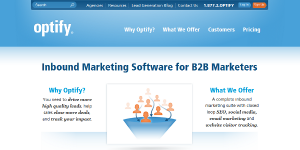Why is Website Visitor Tracking Important?
![]() Many companies that engage with Lead Liaison are looking for website visitor tracking. The premise is simple – knowing which consumers are looking at a web site places a business in a unique position of power. Truly, visitor tracking is the key to business intelligence for companies of all sizes. Knowing who happens to be looking makes inciting clients to buy that much easier. So why aren’t more companies doing it?
Many companies that engage with Lead Liaison are looking for website visitor tracking. The premise is simple – knowing which consumers are looking at a web site places a business in a unique position of power. Truly, visitor tracking is the key to business intelligence for companies of all sizes. Knowing who happens to be looking makes inciting clients to buy that much easier. So why aren’t more companies doing it?
Website Visitor Tracking – Who Can Do It?
Many companies don’t engage in visitor tracking solutions because key staff don’t really know that it exists. Google Analytics is one of the most popular tracking platforms out there – and as a general TOS rule, doesn’t allow individual visitor tracking or the flagging of particular IP addresses. As a result, many companies that could use visitor tracking never seek out the solution, or deem it impossible.
The truth is, tracking software that works with Google Analytics AND does individualized visitor tracking is out there. There are many different types of tracking available – however, it’s important for companies to engage with visitor tracking solutions that meet the company’s overarching needs. In order to find the right solution, staff should discuss overall campaign goals and KPIs.
What Are Businesses Looking to Achieve?
Individual businesses want flexibility, but businesses also need power and sophistication. Marketing automation is perfect for any sized business because the right automation software won’t just track visitors – it will give businesses a great deal of intelligence related to the individual visitor, where they are in the conversion/overall sales process and how best to proceed in order to guarantee a sale.
Many other tracking solutions leave out important steps in this process. A tracking solution that allows individual visitors to be flagged or identified may not then distribute that information in an easy to understand report. Likewise, visitor tracking may not lead to information incorporation into individual marketing campaigns, or have any relativity to overall marketing goals.
This is where marketing automation steps in. With the right solution, businesses can identify individual visitors, get an idea of where they are in the conversion process and lock in on the best next steps to ensure a sale. Whether it’s sending out a targeted email to the user, setting the user up for a phone call or disqualifying the user entirely, visitor tracking solutions as part of a marketing automation program offer flexibility and sales process intelligence that can’t be found elsewhere.
Lead Liaison doesn’t just track visitors – our marketing automation software places visitors in lead funnels that help companies determine what needs to be done to make a sale. For a tour of what we do, contact us today and we’d be happy to consult with you!










